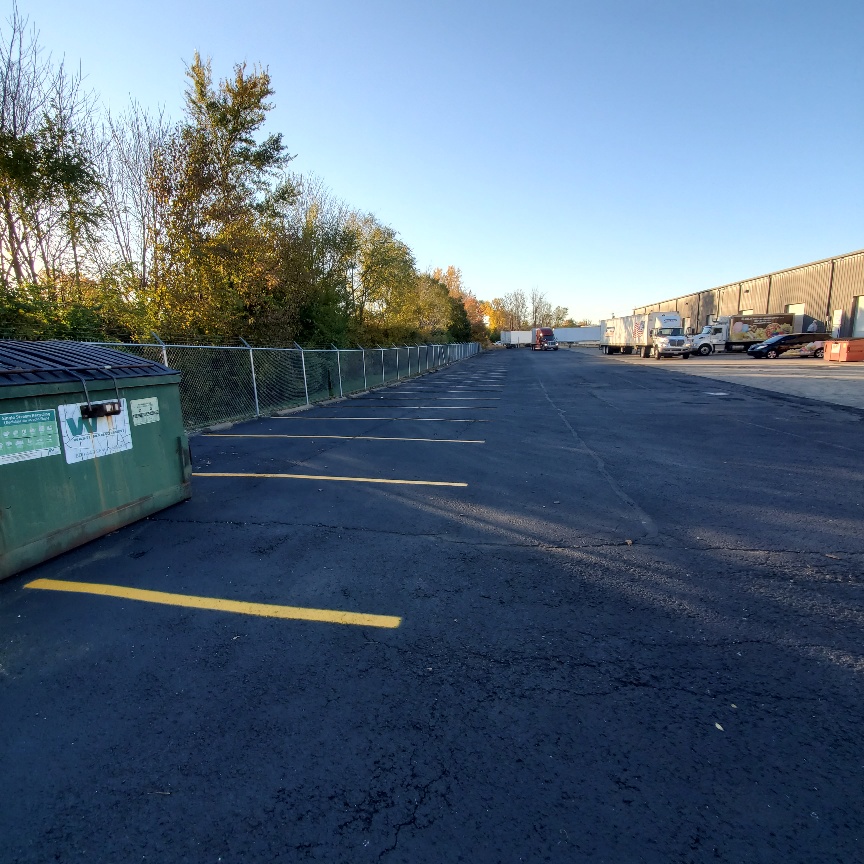The condition of your parking lot matters, and for a whole list of reasons. All reasons boil down to one thing: your margins. Not only does a poorly-maintained parking lot pose a risk of liability, but it can also turn away potential clients, customers, or tenants. As the proprietor or premises manager, it is necessary to keep an eye on the overall quality of your parking lot system. This includes pavement, curbs, sidewalks, bollards, road markings, signage, water drainage, ADA compliancy, and more.
Putting together a good maintenance plan can set you up for success, year-round. Continue below to learn the top 6 elements to incorporate into your parking lot maintenance plan, plus who to trust in Central Indiana for superior commercial pavement repair and installation.

Recommended Parking Lot Maintenance
As a commercial proprietor or building owner, it is in your best interest for your parking lots to last for as long as possible. The better care you take up your commercial pavements, the less money you’ll have to spend on repairs through the years. So, what does a good parking lot maintenance plan entail? Well, there are 6 key elements that should be considered when developing yours.
On-Site Inspections
It is important to routinely inspect your parking lot premises on foot. This allows you to get an up close look at what’s going on with your pavements. Take a clipboard and pen with you so that you may take notes on any needed maintenance or concerns.
Surface Cleaning
Pavements get dirty and therefore require routine cleaning. Whether you do it yourself or appoint a staff, it is necessary to routinely clear your parking lot of debris and garbage. This includes clearing drains, blowing leaves, collecting trash, pressure washing, and possibly even mold treatment.
Sewer Drains
During routine parking lot inspections and surface cleaning, it is necessary to pay special attention to the sewer drains. Water runoff is an imperative part of maintaining a safe and functional parking lot. Be sure that your sewer drains are clear of debris and in good structural condition.
Crack Sealing and Filling
During your routine parking lot examinations, you’ll want to take note of any crack formations. It is important to stay on top of cracks as soon as they begin to develop in order to prevent major pavement repair needs down the line. Crack sealing and crack filling are two common methods used to repair pavement cracks.
Crack sealants are used for working cracks, which are pavement cracks that are vertical or horizontal and is exhibiting movements greater than 2.5 millimeters. Crack sealing material is applied on top of cracks, not inside the crevice. Crack fillers are used for nonworking cracks, which are crack movements less than 2.5 millimeters. Crack fillers are applied inside the crack, filling the gap.
Chemical Cleanup
Another necessary pavement cleaning task is chemical cleanup, which involves eliminating excessive gasoline and motor oil stains. These are harmful materials that can significantly damage pavements. They basically disintegrate the binder that is used to hold pavement together.
Sealcoating
Asphalt parking lots should be sealcoated it every 3 to 5 years. Sealcoating is an imperative element to an effective parking lot maintenance plan, as it adds a protective layer on the surface of the pavement, protecting it from premature damages and providing a barrier against natural wear and tear.
Are you looking for commercial pavers in your area for parking lot maintenance assistance? Contact ACI Asphalt and Concrete at 317-549-1833 for parking lot maintenance and repair in Indianapolis, Indiana. We serve clients all throughout the central parts of the state. Request a bid, today.
Related Posts:
3 Reasons Why it is Important to Understand Asphalt Sealcoating
Should I Be Worried About Standing Water on My Asphalt Lot?
FAQS About ADA Parking Lot Compliance in Indiana
